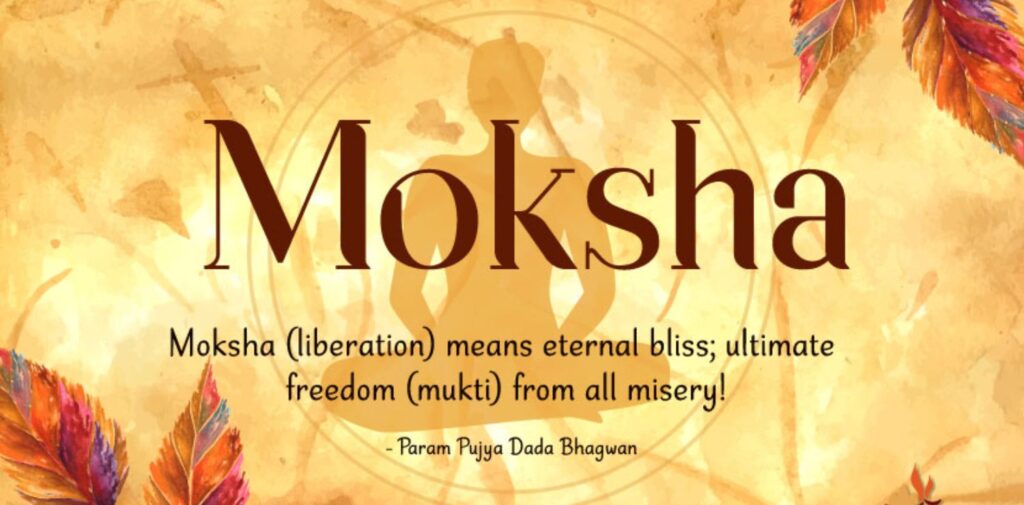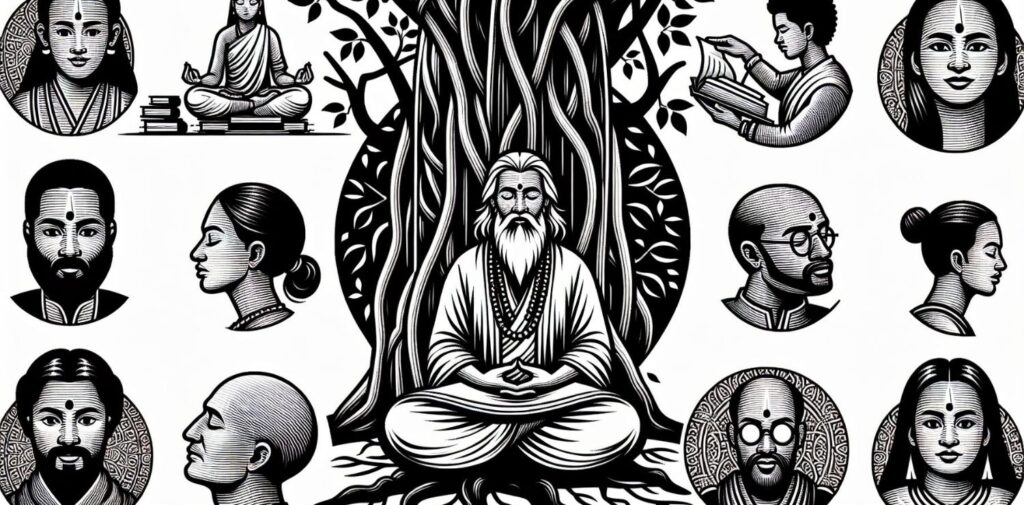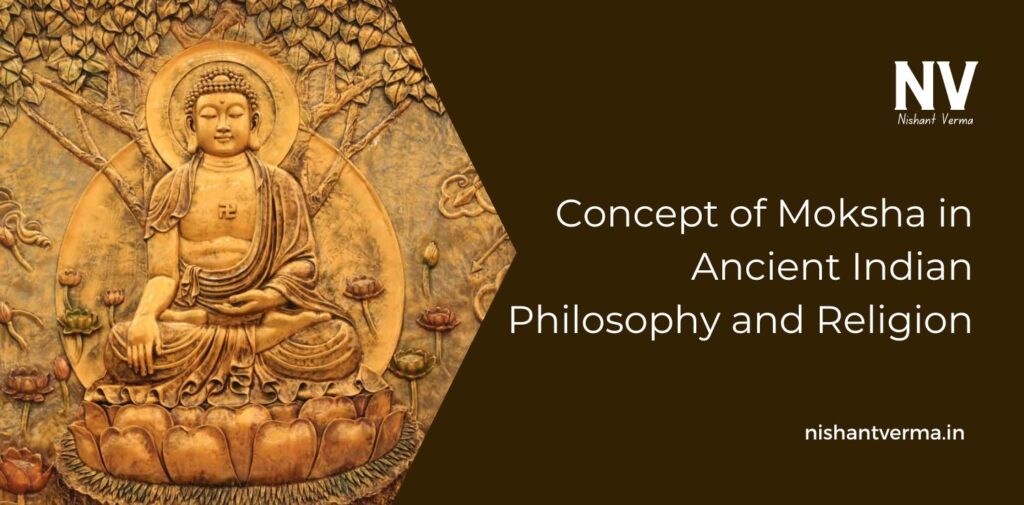India is a land rich in ancient philosophies and religious ideas that have been passed down through generations. One of the most important concepts in Indian religion and philosophy is Moksha. This concept holds a central place in many Indian religions like Hinduism, Buddhism, Jainism, and Sikhism. But what is Moksha? Why is it so important? And how do people in India think about it? Let’s explore this idea in a simple and easy way.
What is Moksha?
In simple words, Moksha means freedom or liberation. It is the ultimate goal of life in many Indian religions. It is the state of being free from the cycle of birth, death, and rebirth. In Hinduism, Buddhism, and Jainism, people believe that we live many lives (called reincarnation), and after each life, we are reborn into a new one. This cycle is called samsara.
It is the final release from this cycle. It is a state of perfect peace and happiness where the soul (or spirit) is no longer bound by the troubles of the world. Achieving it means you are free from all pain, suffering, and worries.

Why is Moksha Important?
In ancient Indian philosophy, life is seen as a journey of learning and growth. But this journey is not easy. Every person has to face challenges, pain, and suffering. The idea of Moksha offers hope to those who believe in it. It teaches that there is a way to end all suffering and achieve lasting happiness and peace.
The concept of Moksha also helps people understand the purpose of life. It gives them a goal to work towards — to live a good life, follow the path of truth and goodness, and ultimately, to achieve freedom from the endless cycle of rebirth.
The Cycle of Birth, Death, and Rebirth (Samsara)
To understand Moksha, we first need to understand the idea of samsara — the cycle of birth, death, and rebirth. According to many Indian religions, after we die, our soul is reborn in another body. This cycle continues over and over again, and we go through many lifetimes.
Each time we are reborn, we face new challenges, joys, and sorrows. But we also carry the results of our actions from our past lives. This is known as karma. Good actions bring good results, and bad actions bring bad results. Karma decides the circumstances of your next life.
The problem with samsara is that it can be full of suffering. Even though we may experience happiness in some parts of our life, there is always pain, illness, or death. We can never escape the ups and downs of life. The ultimate goal of many spiritual teachings in India is to break free from this cycle of suffering and reach Moksha.
How to Achieve Moksha?
Achieving Moksha is not easy, and it requires deep understanding, hard work, and dedication. Each religion has different teachings about how to reach it, but there are some common ideas.
Following the Path of Dharma
In Hinduism, the path to Moksha is often linked to the concept of dharma. Dharma means living in a way that is moral, righteous, and in harmony with the universe. It involves doing good deeds, helping others, and following the teachings of religion. Living according to dharma helps purify the soul and brings a person closer to Moksha.
In Hinduism, there are four main goals in life — Dharma (duty), Artha (prosperity), Kama (pleasure), and Moksha (liberation). While we need to focus on the first three goals, Moksha is the ultimate aim of life.

The Practice of Meditation
In Hinduism, meditation is a key practice for achieving Moksha. Through meditation, people can quiet their minds, focus on their inner self, and connect with the divine. Meditation helps people understand the nature of the soul and the world around them. It teaches them to detach from the material world and focus on the spiritual.
Buddhism also places a lot of importance on meditation. The Buddha taught that meditation helps a person gain insight into the true nature of existence and overcome suffering. By practicing meditation, one can reach nirvana, which is similar to Moksha in Buddhism. It is the state of enlightenment and freedom from the cycle of rebirth.
Overcoming Desire and Attachment
One of the main teachings in Hinduism, Buddhism, and Jainism is that desires and attachments cause suffering. People suffer because they want things that they cannot always have. In Hinduism, this is known as Maya, the illusion of the material world. To reach Moksha, one must overcome these desires and attachments.
Buddhism teaches that the way to stop suffering is by understanding the Four Noble Truths, one of which is that attachment leads to suffering. If you let go of your desires and focus on the present moment, you can reach peace and freedom.
In Jainism, the path to Moksha is through non-violence (ahimsa), truth, and self-discipline. Jains believe that by freeing oneself from attachments to worldly things, one can purify the soul and reach liberation.
The Role of Karma
Karma plays an important role in the journey to Moksha. In simple terms, karma means that your actions have consequences. If you do good deeds, good things will happen to you, and if you do bad things, bad things will happen to you. By practicing good karma in your life — by being kind, honest, and helpful — you can improve your future and move closer to Moksha.
In Hinduism, it is believed that the better your karma, the closer you come to liberation. Over time, as you accumulate good karma, you can break free from the cycle of samsara.

Moksha in Different Indian Religions
Although the idea of Moksha is most closely linked with Hinduism, it is also an important concept in Buddhism, Jainism, and Sikhism. Let’s take a brief look at how different religions view Moksha:
- Hinduism: In Hinduism, It is seen as freedom from the cycle of life, death, and rebirth. It is the ultimate goal of human life and can be achieved by following the path of dharma, meditation, and good karma.
- Buddhism: In Buddhism, the goal is to reach nirvana, a state similar to Moksha. It is the end of suffering and the freedom from the cycle of birth and death. Buddhism teaches that meditation and overcoming desires are key to reaching nirvana.
- Jainism: In Jainism, It is achieved by following the path of non-violence, truth, and self-discipline. Jains believe that Moksha is the liberation of the soul from the cycle of rebirth.
- Sikhism: In Sikhism, It is similar to the idea of merging with Waheguru (God). It is achieved through devotion to God, meditation, and living a life of humility, kindness, and service.
Conclusion
Moksha is one of the most important concepts in ancient Indian philosophy and religion. It represents the ultimate goal of life — to achieve freedom from the endless cycle of birth, death, and rebirth. Whether through dharma, meditation, karma, or overcoming desires, the path to Moksha is a journey of self-discovery and spiritual growth.
It offers a vision of peace, happiness, and liberation, inspiring many people to live a life of goodness, compassion, and spiritual wisdom. By understanding the concept of Moksha, we not only learn about ancient Indian philosophy but also about the universal desire for freedom, peace, and a deeper connection with the world around us.




